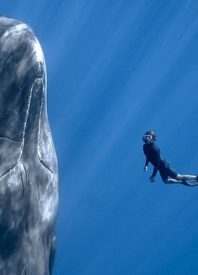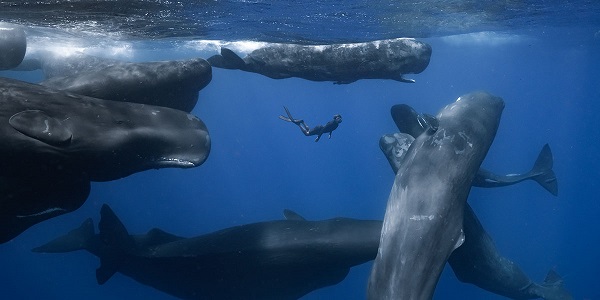
Sperm whales are a difficult animal to study. Outside of the beautiful yet typical nature shots and interview segments, Patrick and the Whale gives some of its screening time to pay attention to machines like camera and radios that the marine biologists use to study the sperm whales. One of these marine biologists is Patrick Dykstra, who loved whales since he was a child, and works hard as a lawyer to finance his studies. A specific incident in England retriggered his need to study whales, as he saw ten dead teenage male whales on the beach. This incident leads him from England to Dominica where he meets two female whales, Can Opener and Dolores, and studying them involves putting a camera on their large bodies.
One of the major revelations viewers can have is how one sided natural sciences can be. Which isn’t to say that I don’t trust the information that the film is presenting, I do. If anything, it’s Dykstra’s arc that opens up that realization. He starts out as someone who is willing to do whatever it takes to study these whales, no matter the cost, and ends up as someone empathizing with the whales and realizing that his methods of study, despite his good intentions, are intrusive to these indestructible creatures. The filmmaking complements these changing ethos although thankfully, the visual arcs aren’t as obvious. Again, the beautiful wide shots are here but the film becomes more interesting with its intimate approach to its subjects.
- Release Date: 9/9/2022



January 17, 2025
… [Trackback]
[…] Read More Information here to that Topic: intheseats.ca/tiff-2022-our-review-of-patrick-and-the-whale/ […]